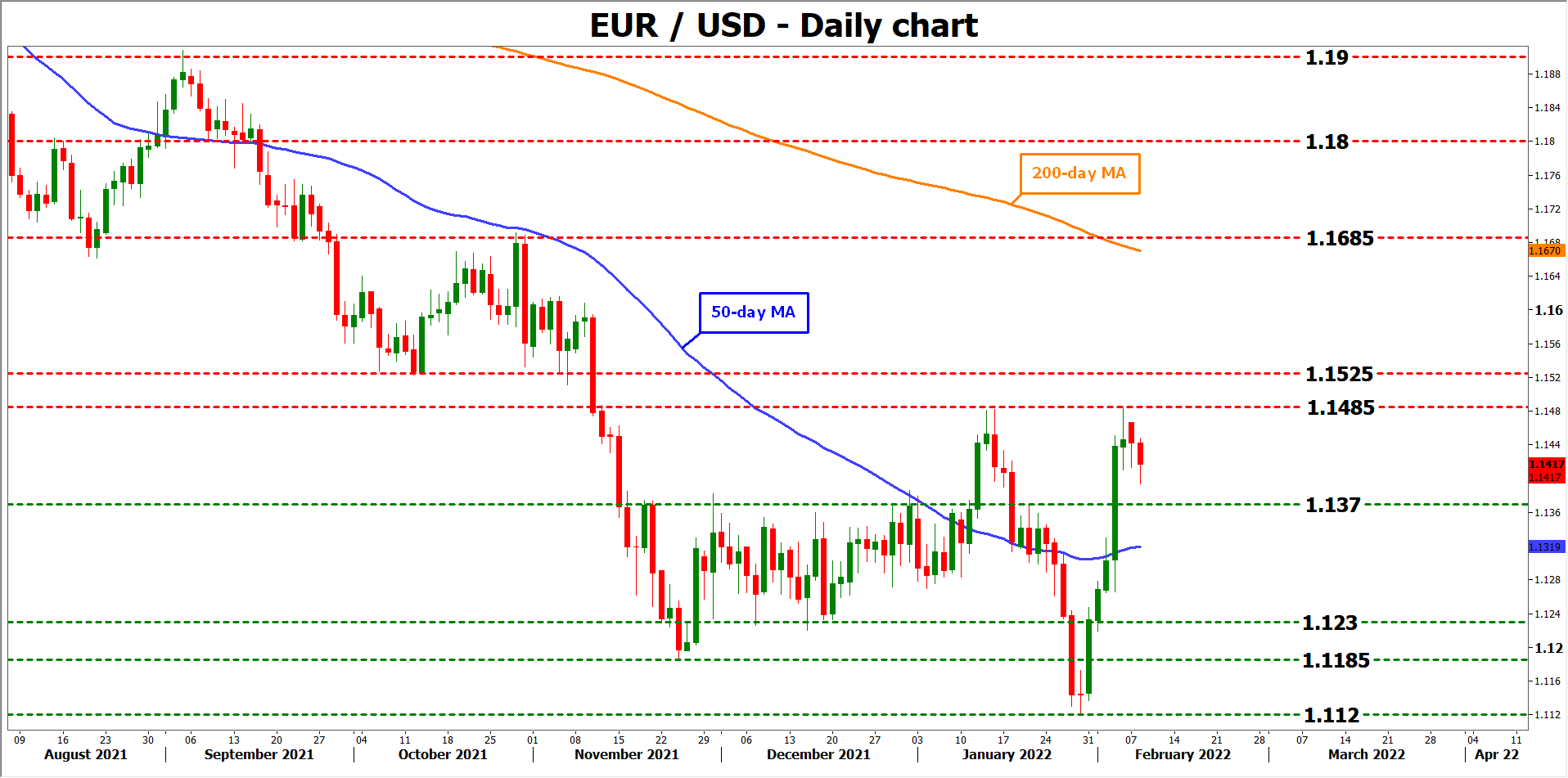Fed gets serious
The US economy has bounced back from the crisis with incredible force. Consumption has gone through the roof and remains comfortably above its pre-pandemic trend, boosting economic growth. Meanwhile, the labor market is almost back to full employment, which has started to push wages higher.
With wages firing up, the Fed is worried inflation might not cool even after supply chains normalize. As such, policymakers are preparing to raise interest rates, to slow down the economy and drag inflation lower. Money markets are currently pricing in five rate increases for this year and have started to entertain the idea of a sixth.
In fact, incoming data has been so strong that traders now assign a 36% probability for a ‘double’ hike of 50 basis points at the March meeting amid speculation that the Fed may need to resort to more drastic measures. The upcoming inflation numbers could decide whether that’s realistic or not.
Still heating up
In January, the yearly CPI rate is expected to have risen to 7.3%, from 7.0% previously. Similarly, the core rate that strips out volatile items like energy and food is seen at 5.9%, up from 5.5% in December.
These forecasts are supported by the latest Markit PMI business surveys. They showed that US companies raised their selling prices at about the same pace as last month, which corresponds with the forecast for the monthly CPI print.
A positive surprise seems more likely than a negative one considering that oil prices rose around 17% during the month. That said, the ‘elephant’ in this report will be rent prices, which account for about one third of the entire CPI basket.
One last ‘hurrah’ for the dollar?
In the markets, another positive inflation surprise this week could fuel speculation that the Fed needs to roll out the big guns and raise the odds of a ‘double’ rate hike in March, helping the dollar to recover some of its recent losses.
Taking a technical look at euro/dollar, a positive CPI surprise might push the pair lower, with initial support likely to be found around the 1.1370 zone.
In case of a disappointment, the pair could shoot higher to challenge the 1.1485 region.
While expectations for faster Fed increases and the volatile environment in global markets may keep the dollar supported in the near term, the overall rally may be approaching its final stages. The US economy is booming right now, but ‘peak growth’ is likely behind us.
Government spending - which did all the heavy lifting during the crisis - is now fading and will become a drag on economic growth this year. The year already started on a soft note thanks to the Omicron wave, with the Atlanta Fed GDPNow model pointing to real growth of just 0.1% in the first quarter. Nobody is calling for a recession, only for a slowdown after two years of above-potential growth.
There’s also the prospect of ‘peak inflation’ soon. Some early signs suggest that supply chains are correcting and the year-over-year comparisons will become much tougher from March onwards. That means the yearly inflation rate could peak this quarter already, causing traders to pare back bets for shock-and-awe Fed hikes.
The final arc of this argument is foreign central banks, which have started to follow the Fed in signaling rate increases. Therefore, we are no longer in an environment of monetary policy divergence that clearly favors the dollar, but rather of policy convergence as yields are moving higher globally.
All told, the near term outlook for the dollar remains favorable, yet the longer term picture seems to be turning. The overall uptrend may be on its final legs.





